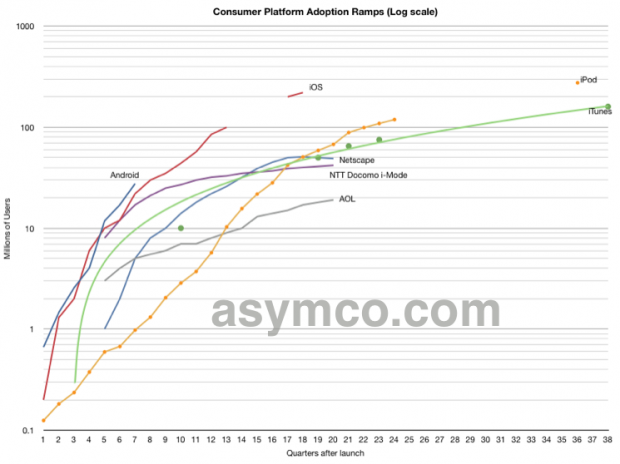The latest iOS numbers and the new iPod touch launch demonstrate what a huge hit the iPod touch has become. It’s safe to assume that about half of all iPods, or between 4 and 5 million units in the current quarter, are sold as touch versions.
The iPod touch has been around about as long as the iPhone. It was launched three months after the first iPhone 2G, almost exactly three years ago. While the iPad has been in the market less than six months, a large number of potential competitors have been launched running Android and there seems to be a real rush to market. Six months is about as quickly as any hardware product can be reasonably engineered.
So the question is why is the iPad being cloned while the iPod has remained in the market by itself?
The value of the iPod is arguably as high with a healthy margin and consistent pricing. The volumes are comparable with tens of millions already sold so there is no obvious economic disadvantage to the iPod vs. iPad. Indeed, the iPod touch is a large (1.6) multiplier to the whole iOS platform. The demographics are very sweet too with a clear upsell opportunity.
One explanation might be that the iPod is a music device and that market has been locked up with iTunes, putting up a huge barrier to entry. However during the music launch this month, there was almost no mention of the iPod touch as a music player while it was loudly touted as a game and app platform. Browsing and Facetime are also huge uses for the device.
So in the iPod touch we have a mini iPad–ironically, the dig at the iPad was that it was nothing more than a large iPod touch.
So if cloners are rushing to copy the iPad, why not its smaller incarnation?

